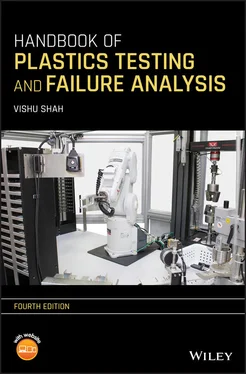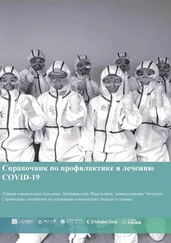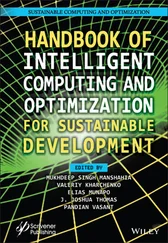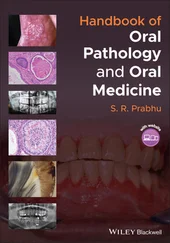442 430
443 431
444 432
445 433
446 434
447 435
448 436
449 437
450 438
451 439
452 440
453 441
454 442
455 443
456 444
457 445
458 446
459 447
460 448
461 449
462 450
463 451
464 452
465 453
466 454
467 455
468 456
469 457
470 458
471 459
472 460
473 461
474 462
475 463
476 464
477 465
478 466
479 467
480 468
481 469
482 470
483 471
484 472
485 473
486 474
487 475
488 476
489 477
490 478
491 479
492 480
493 481
494 482
495 483
496 484
497 485
498 486
499 487
500 488
501 489
502 490
503 491
504 492
505 493
506 494
507 495
508 496
509 497
510 498
511 499
512 500
513 501
514 502
515 503
516 504
517 505
518 506
519 507
520 508
521 509
522 510
HANDBOOK OF PLASTICS TESTING AND FAILURE ANALYSIS
FOURTH EDITION
VISHU SHAH
Consultek
Diamond Bar, California

This edition first published 2021
© 2021 John Wiley & Sons, Inc.
Edition History John Wiley & Sons (1e, 1984) John Wiley & Sons (2e, 1998) John Wiley & Sons (3e, 2007)
All rights reserved. No part of this publication may be reproduced, stored in a retrieval system, or transmitted, in any form or by any means, electronic, mechanical, photocopying, recording or otherwise, except as permitted by law. Advice on how to obtain permission to reuse material from this title is available at http://www.wiley.com/go/permissions.
The right of Vishu Shah to be identified as the author of this work has been asserted in accordance with law.
Registered Office John Wiley & Sons, Inc., 111 River Street, Hoboken, NJ 07030, USA
Editorial Office 111 River Street, Hoboken, NJ 07030, USA
For details of our global editorial offices, customer services, and more information about Wiley products visit us at www.wiley.com.
Wiley also publishes its books in a variety of electronic formats and by print‐on‐demand. Some content that appears in standard print versions of this book may not be available in other formats.
Limit of Liability/Disclaimer of Warranty In view of ongoing research, equipment modifications, changes in governmental regulations, and the constant flow of information relating to the use of experimental reagents, equipment, and devices, the reader is urged to review and evaluate the information provided in the package insert or instructions for each chemical, piece of equipment, reagent, or device for, among other things, any changes in the instructions or indication of usage and for added warnings and precautions. While the publisher and authors have used their best efforts in preparing this work, they make no representations or warranties with respect to the accuracy or completeness of the contents of this work and specifically disclaim all warranties, including without limitation any implied warranties of merchantability or fitness for a particular purpose. No warranty may be created or extended by sales representatives, written sales materials or promotional statements for this work. The fact that an organization, website, or product is referred to in this work as a citation and/or potential source of further information does not mean that the publisher and authors endorse the information or services the organization, website, or product may provide or recommendations it may make. This work is sold with the understanding that the publisher is not engaged in rendering professional services. The advice and strategies contained herein may not be suitable for your situation. You should consult with a specialist where appropriate. Further, readers should be aware that websites listed in this work may have changed or disappeared between when this work was written and when it is read. Neither the publisher nor authors shall be liable for any loss of profit or any other commercial damages, including but not limited to special, incidental, consequential, or other damages.
Library of Congress Cataloging‐in‐Publication Data
Names: Shah, Vishu, 1951– author.
Title: Handbook of plastics testing and failure analysis / Vishu Shah, Consultek, Diamond Bar, California.
Other titles: Handbook of plastics testing technology
Description: Fourth edition. | Hoboken, NJ : John Wiley & Sons, Inc., 2020. | Revision of: Handbook of plastics testing technology. 1998. | Includes bibliographical references and index.
Identifiers: LCCN 2020024751 (print) | LCCN 2020024752 (ebook) | ISBN 9781118717110 (hardback) | ISBN 9781118943625 (adobe pdf) | ISBN 9781118943632 (epub)
Subjects: LCSH: Plastics–Testing–Handbooks, manuals, etc.
Classification: LCC TA455.P5 S457 2020 (print) | LCC TA455.P5 (ebook) | DDC 620.1/9230287–dc23
LC record available at https://lccn.loc.gov/2020024751LC ebook record available at https://lccn.loc.gov/2020024752
Cover Design: Wiley
Cover Image: cover photograph courtesy of Instron
PREFACE TO THE FOURTH EDITION
Plastics testing technology, like all other evolving technologies, is dynamic in its principle. Even the well‐established tests get continual refinement. The advent of computers, robotics, and other advanced manufacturing technologies has contributed to the simplicity, accuracy, automation, and speed of testing. A lot has evolved since the third edition. Notable and dramatic changes have taken place in test equipment. They are in response to the demand from the material suppliers, compounders, processors, manufacturers, and end‐users. The explosive growth of the plastics industry has left a void in terms of recruiting trained technicians to conduct the tests in a meaningful way. The equipment suppliers have developed comprehensive technology that includes more sophisticated equipment that is capable of performing tests without much intervention and also analyze the data and present results in an easy‐to‐interpret format.
Accordingly, the fourth edition seeks to update the chapters in line with the latest developments that include the revisions to the testing procedures, photographs showing the newer version of commercially available equipment, useful data, and references. The appendix section has been revised extensively. The evolution of science and technology‐based search engines has made finding the listing of standards and comparing property values relatively more straightforward, thus eliminating the need for the printed version. Appendix pointing the readers to information sources on the web along with the Links to Recommended open source for quick learning is added.
Included with the third edition was a DVD containing numerous color photographs, depicting photoelastic analysis, color theory, and animations along with a virtual tour of the plastics testing laboratory. This has been moved to online access with the latest revisions. In line with the primary objective of this book of providing a hands‐on reference for the novice and professionals, a new feature is added. The readers will have access to the supplementary website containing color photographs, animations, videos, and a problem‐solution manual.
Once again, I wish to express thanks to all the users of previous editions for their constructive comments and helpful suggestions for changes and improvements for the next edition and to those who helped with this revision. In particular, I wish to thank Rich Goshgarian, Francesca Pinto of Instron Corporation, Al Zielnik of Atlas Material Testing, Jim Galipeau of Intertek, Mike Bradley of Thermo Fisher Scientific, Joel Feingold and Tim Wilson of Strainoptics, Inc., Patrick Burke of Jordi Labs, and Sandra Weixel of BYK‐Gardner. Many thanks to Dr. Todd Menna of Element Materials Technology for his invaluable contribution and all other companies for providing numerous illustrations and diagrams. Lastly, I would like to thank the publisher and the staff, especially Jonathan Rose and Aruna Pragasam, for guiding me and patiently waiting for me to complete the revision, which took much longer than anticipated.
Читать дальше












